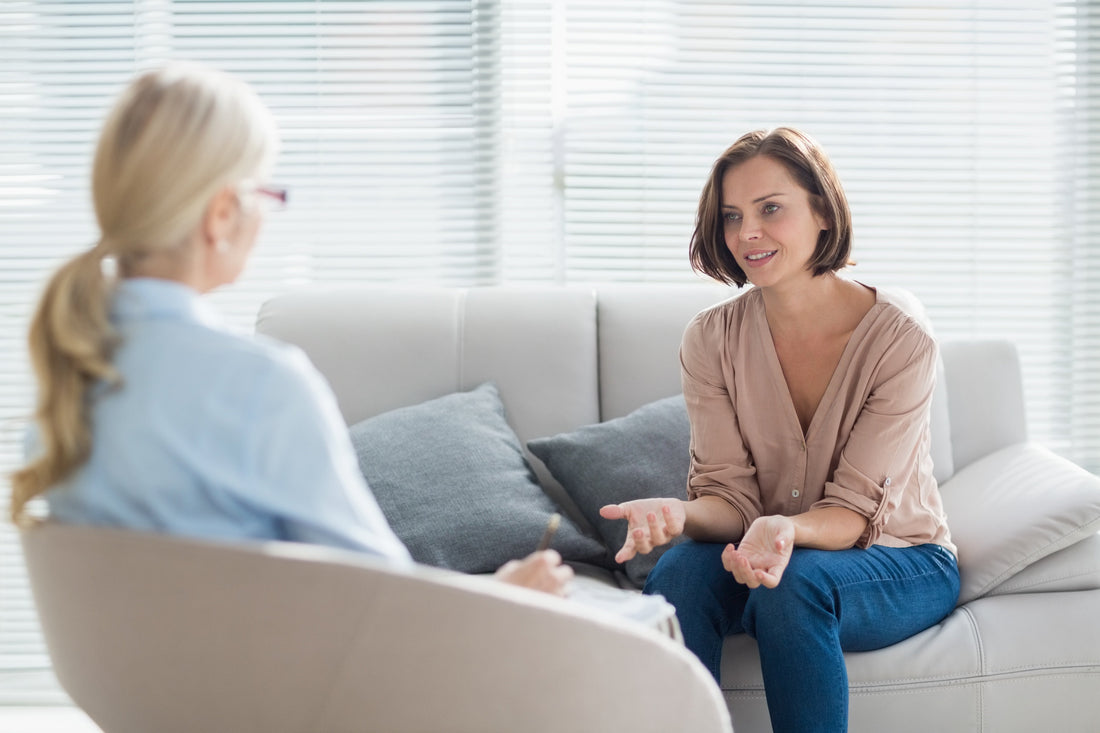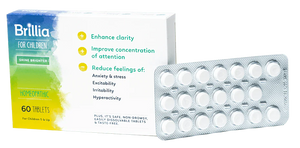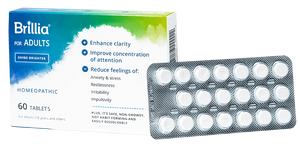If you’ve never been to a therapist before, the idea of confiding your worries to a stranger may feel like a daunting prospect. But the benefits of going to therapy are plentiful. Research shows that going to a therapist can improve symptoms of depression and anxiety, reduce high blood pressure, and potentially decrease the use of psychiatric hospitalization.1 Therapy doesn’t just help you understand yourself better; it also helps you understand other people. To ease you into the experience, we’ll explore some tips on how to prepare for your first session, questions to ask your therapist to ensure they’re a good fit, and why pairing therapy with medication may give you more successful results.
Preparing for Your First Session
The American Psychological Association (APA) recommends that you prepare for your first session ahead of time to help lessen any anxiety you may feel.2 The first question your therapist will likely ask you at your initial session will be why you’re seeing them in the first place. Before you arrive, spend some time reflecting on what you hope to get out of therapy to ensure that your time together will be productive.
If you’re anxious about your upcoming appointment, try the following to settle your feelings:
- Don’t fret about what to say: Instead of rehearsing a speech before your first appointment, try to go in with an open mind. While it’s helpful to consider your therapy goals and why you’re seeing a therapist in the first place, it’s also okay to admit to the therapist that things just don’t feel quite right so they can help you come up with goals together.
- Manage your expectations: Don’t expect to cover it all in one session. The first appointment is likely to include general necessities like paperwork, insurance coverage, confidentiality, and the overall process of therapy.
- Schedule your appointment for a convenient time: You don’t want to feel as if you have to rush to get to the session or get out of the session. Make sure you schedule your appointment at a convenient time and give yourself some flexibility so you have time to relax before the session and afterward.
- Dress for comfort: There’s no need to dress to impress at your first appointment. You’ll want to feel relaxed and ready to sit in any position that feels most comfortable.
- Share with close family and/or friends that you’re going to therapy: You may be relieved to discover they too have seen a therapist or they might just offer support to help you feel confident about your upcoming appointment.
- Come armed with questions: It’s important that you trust your therapist and feel like they’re a good fit. Coming up with some questions to ask them will help you suss them out. We’ll explore some potential questions in the next section.
Questions to Ask During Your First Visit
Your first therapy session is a good opportunity to get a feel for what your therapist is like. Asking them the following questions can help you determine if you’ll feel comfortable sharing intimate details with them:
- What kind of therapy do you offer? Just as there are many different types of reasons you might come to therapy, there are many different methods of therapeutic practice. From cognitive behavioral therapy (CBT) to narrative therapy, knowing the methodology your therapist offers will help you prepare.
- How often should we meet? Some therapists recommend once-a-week meetings, while others may prefer several weekly meetings. Knowing how much time you are expected to devote to therapy can help you manage your expectations and your time.
- Can you help me create some goals? If you have a hunch that you need therapy but you don’t know exactly why or what you hope to get out of it, ask your therapist to help you. They may have some tools or practices that can get you started on making goals.
- Who leads the session? Some therapists will sit back and let you take the lead during sessions, allowing you to bring up whatever you need to work on at the moment. Other therapists will provide more structure to the sessions and probe you with questions. Which do you prefer?
- What resources are available to me outside of therapy? Your therapist cannot be with you at all times. But they may have books or websites to recommend, or maybe an email where you can reach them after hours. Knowing the resources available to you outside of therapy will help you feel supported inside and outside of their office.
Pairing Therapy With Medication
According to the APA, combining psychotherapy and medications may be more effective than either treatment alone.3 However, most prescription medications for depression, anxiety, ADHD, and other disorders come with undesirable side effects like nausea, drowsiness, dry mouth, and weight changes. Seeking an alternative medication like Brillia can help you tackle anxiety, low mood, and ADHD symptoms without harsh chemicals or harmful side effects by combining antibody science with homeopathy.
Brillia works by regulating the activity of the S-100 proteins, which play a crucial role in mood regulation, focus, and neuroplasticity. Studies show that S100B levels are out of balance in patients struggling with anxiety, depression, and ADHD.4 When we become stressed or anxious, the S100B protein binds to a specific target enzyme in the brain to instigate symptoms like irritability and restlessness. Brillia’s active ingredient reduces these symptoms at the source by locating and attaching to the S100B protein and changing its shape so it cannot bind to its target enzyme. The process is gentle, impactful, and safe enough for use in children as well as adults.
There are no contraindications with other medications or supplements either, so you can safely add it to your regimen without worry. If you are already taking medication and starting therapy, you can use Brillia to wean yourself off of your prescription medication once Brillia has built up in the system, which may take 2-3 weeks, or longer. However, you are encouraged to consult your doctor first before coming off any medication. Brillia can also be used in lieu of increasing your dosage.
Combining Brillia with therapy allows you to feel more balanced by attacking anxiety, irritability, restlessness, and other symptoms from various angles. In the same sense, Brillia also recommends that users follow the 5-Pillar methodology, which consists of healthy lifestyle habits like following a nutritious diet, getting adequate sleep, controlling your screen time, and practicing mindfulness techniques.
Learn more about how Brillia works and explore our blog for resources for mental health and following a healthy lifestyle.
Resources: 1https://positivepsychology.com/benefits-of-psychotherapy/,2https://www.apa.org/topics/psychotherapy/understanding,3https://www.apa.org/ptsd-guideline/patients-and-families/medication-or-therapy,4https://www.ncbi.nlm.nih.gov/pmc/articles/PMC6341924/
Get a whole bunch of support right in your inbox.







